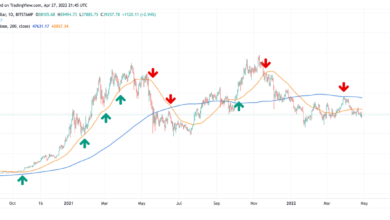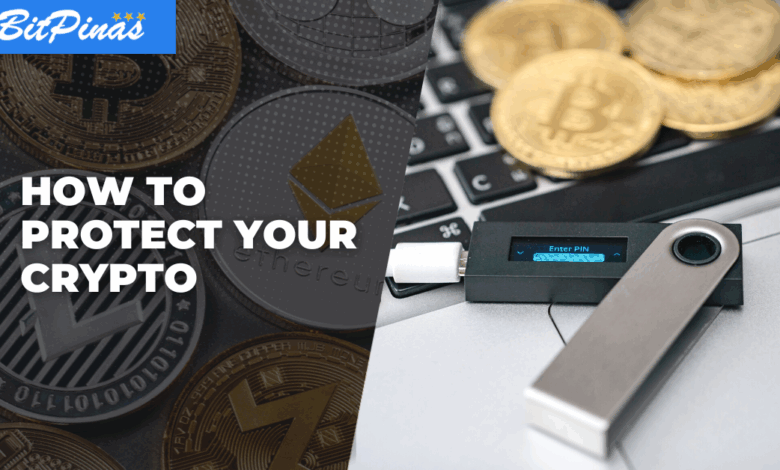
How to Keep Your Crypto Wallet Secure
How to Keep Your Crypto Wallet Secure from Cyber Threats, a crucial aspect of navigating the digital realm of cryptocurrency, is explored in detail in this comprehensive guide. Protecting your digital assets from malicious actors is paramount, as cyber threats become increasingly sophisticated and impactful.
This guide delves into the importance of robust security measures, covering everything from password management and hardware wallet usage to recognizing phishing attempts and safeguarding private keys. We’ll explore the specific risks associated with different wallet types, offering practical advice to bolster your defenses and maintain the safety of your crypto holdings.
Importance of Crypto Wallet Security
Protecting your crypto assets is paramount in the ever-evolving digital landscape. A compromised crypto wallet can lead to significant financial losses and reputational damage, highlighting the critical need for robust security measures. The increasing sophistication of cyber threats demands a proactive approach to safeguarding your digital wealth.The risks associated with a compromised crypto wallet are multifaceted. Hackers exploit vulnerabilities in wallets to steal valuable cryptocurrencies, potentially resulting in substantial financial losses for the user.
Beyond financial implications, a security breach can damage an individual’s or organization’s reputation, impacting trust and future dealings in the crypto space. These incidents often garner media attention, potentially deterring new investors or eroding the confidence of existing ones.
Crypto Wallet Breach Examples and Consequences
Numerous high-profile crypto wallet breaches have underscored the importance of robust security practices. These breaches, ranging from sophisticated exploits to simple phishing scams, demonstrate the ever-present danger of online threats. For instance, the 2021 incident involving a prominent cryptocurrency exchange, where hackers stole millions of dollars worth of crypto, highlighted the vulnerabilities inherent in certain systems. The resulting financial losses and reputational damage served as a stark reminder of the need for enhanced security protocols.
The consequences of such attacks extend beyond the immediate financial loss, impacting the overall health and confidence of the cryptocurrency market.
Different Crypto Wallet Security Measures
Various types of crypto wallets offer varying levels of security. Understanding the security features of each type is crucial in selecting the most appropriate option for your needs.
- Hardware Wallets:
- Hardware wallets, such as Ledger Nano S and Trezor, are considered a highly secure option. They physically isolate private keys, reducing the risk of compromise from software vulnerabilities. These wallets offer offline storage, shielding your private keys from online attacks. The physical security of the device is a crucial component of the overall security posture. Hardware wallets provide a robust layer of security against many common cyber threats.
- Software Wallets:
- Software wallets, like those integrated into cryptocurrency exchanges, are accessible online. While convenient, these wallets are more susceptible to cyberattacks than hardware wallets due to the nature of online storage and processing. Regular updates and strong security protocols are essential, but the inherent online nature still introduces risks.
- Mobile Wallets:
- Mobile wallets offer a balance of convenience and security. They provide access to your cryptocurrencies on the go, but their security relies heavily on the user’s vigilance in protecting their device. Strong passwords, two-factor authentication, and regular security updates are crucial for maintaining security. The risks associated with mobile wallets stem from the vulnerability of the device itself, and the potential for malicious software to compromise your data.
Carefully considering the risks and employing appropriate security measures are essential for safeguarding your crypto assets.
Increasing Sophistication of Cyber Threats
Cybercriminals are constantly evolving their tactics, making it more difficult for crypto users to stay secure. The sophistication of cyber threats is increasing, demanding vigilance and adaptation from users. Phishing attacks, malware, and more advanced social engineering techniques are being employed to exploit vulnerabilities in crypto systems. The rise of sophisticated attacks necessitates the adoption of multi-layered security strategies.
For instance, recent attacks have involved sophisticated phishing campaigns targeting users through seemingly legitimate emails or websites, leading to the compromise of personal information and crypto wallets. A constant state of vigilance and adaptation is required to stay ahead of evolving threats.
Financial Losses and Reputational Damage from Cyberattacks
Compromised crypto wallets can lead to substantial financial losses. The theft of cryptocurrencies can result in significant financial hardship, potentially impacting users’ financial stability. Beyond the direct financial losses, reputational damage can also occur. High-profile breaches often result in negative publicity, impacting trust in the platform or individual. This negative publicity can deter new users or damage the reputation of existing ones, highlighting the importance of proactive security measures.
The impact on an individual or an organization’s reputation can be substantial, lasting far beyond the initial financial losses. A tarnished reputation can negatively affect future opportunities and collaborations.
Strong Password Management Practices
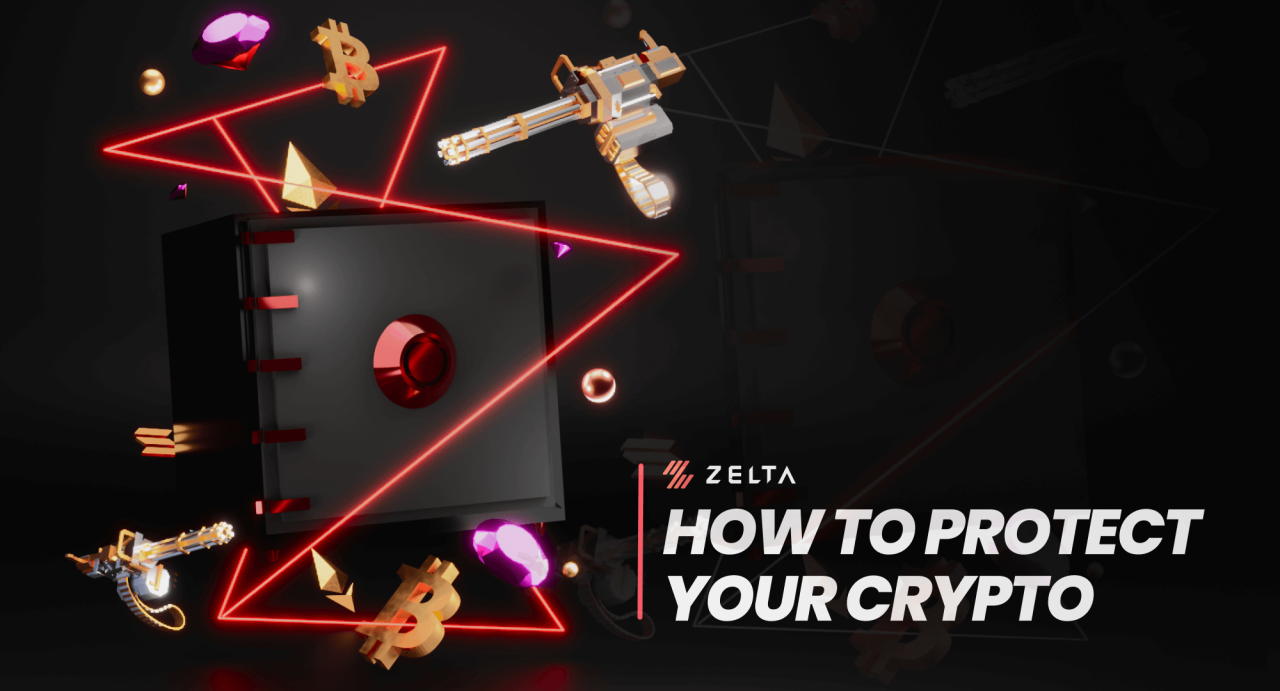
Source: zelta.io
Protecting your crypto wallets requires more than just a strong password—it demands a strategic approach to password management. Weak passwords are a major vulnerability, allowing hackers to gain access to your valuable assets. A well-thought-out strategy will significantly bolster your security posture.Password complexity is paramount to security. Simply having a password is not enough. Robust passwords, combined with other security measures, provide a layered defense against unauthorized access.
Password Creation and Storage Best Practices
A strong password is a fundamental element of robust security. It should be unique, complex, and easily remembered without compromising its strength. Avoid using easily guessable information, such as birthdays, names, or common words. Instead, use a combination of uppercase and lowercase letters, numbers, and symbols. This multifaceted approach makes the password considerably harder to crack.
Storing passwords securely is equally critical. Never write down passwords or store them in easily accessible locations. Employ a reliable password manager. These tools encrypt your passwords and make them available only when needed. They can also generate strong, unique passwords for different accounts.
Importance of Password Complexity and Uniqueness
Password complexity and uniqueness are crucial for safeguarding your crypto wallet. A simple password is easily deciphered by sophisticated hacking tools. Using the same password across multiple accounts creates a significant security risk. If one account is compromised, attackers can potentially access all your other accounts. A unique and complex password for each account significantly reduces this vulnerability.
Password Strength Criteria
The strength of a password is directly related to its length, character types, and the inclusion of symbols. A password should be long enough to deter brute-force attacks. Using a combination of uppercase and lowercase letters, numbers, and symbols significantly increases its complexity.
| Criterion | Description | Example |
|---|---|---|
| Length | At least 12 characters is recommended. | StrongerPassword123! |
| Character Types | Include a mix of uppercase, lowercase, numbers, and symbols. | StRoNgPa$$wOrd123! |
| Symbols | Use special characters like !, @, #, $, %, etc. | StRoNgPa$$wOrd123!@ |
Multi-Factor Authentication (MFA)
Multi-factor authentication (MFA) adds an extra layer of security to your crypto wallet. It requires more than just a password to access your account. This extra verification step significantly reduces the risk of unauthorized access, even if a password is compromised. MFA commonly involves a one-time code sent to your phone or an authenticator app.
Managing Multiple Crypto Wallets Securely
Managing multiple crypto wallets requires a systematic approach to security. Using a dedicated password manager for all your crypto wallet credentials is a good practice. The manager will securely store and manage the login details for each wallet. This ensures that you can easily access your wallets without compromising security. Furthermore, utilizing a hardware wallet for your most valuable assets adds another layer of protection.
These wallets store your private keys offline, enhancing security against online attacks.
Secure Hardware Wallet Usage
Hardware wallets represent a significant leap forward in crypto security. Unlike software wallets, which reside on your computer or phone, hardware wallets are physically separate devices, effectively isolating your private keys from potential cyber threats on your connected devices. This physical separation dramatically reduces the risk of compromise, making them a crucial component of a robust security strategy.Hardware wallets, though more expensive than software wallets, offer a higher level of security, often acting as a fortress protecting your digital assets.
Their security stems from the fact that your private keys are never exposed to the internet or your operating system. This crucial distinction makes them an essential part of responsible crypto management.
Protecting your crypto wallet from hackers is crucial, and strong passwords are a must. But did you know that some natural remedies, like using garlic and black pepper for pain relief, can also be surprisingly effective? Check out this guide on How to Use Garlic and Black Pepper for Pain Relief Effectively for some interesting insights.
Ultimately, taking a multi-faceted approach to security, from robust passwords to understanding potential threats, is key to keeping your digital assets safe.
Benefits of Hardware Wallets over Software Wallets
Hardware wallets provide a stronger layer of security against various threats. Software wallets, residing on potentially vulnerable devices, are susceptible to malware, hacking, and even accidental data loss through device theft or damage. Hardware wallets, with their dedicated, isolated storage of private keys, eliminate these risks. They offer an added layer of protection against social engineering attacks and phishing scams, which often target software wallets through compromised websites or applications.
Security Features of Different Hardware Wallet Models
Hardware wallets come equipped with advanced security features. Many models incorporate a secure element, a specialized chip designed to protect private keys. This chip is often tamper-proof, adding an extra layer of security. Some wallets also offer advanced authentication methods, such as multi-factor authentication or biometric verification, further bolstering security. The security features vary between models, so it is important to research and choose a wallet that meets your specific needs and risk tolerance.
Crucial Steps in Setting Up and Using a Hardware Wallet, How to Keep Your Crypto Wallet Secure from Cyber Threats
Setting up a hardware wallet involves several crucial steps to ensure proper configuration and security. First, you need to carefully follow the manufacturer’s instructions for device setup and software installation. This often includes registering the wallet and creating a backup of your seed phrase. The seed phrase, a set of words that acts as a backup for your private keys, is the most important part of this process.
It must be stored in a safe and secure location, separate from the device itself.
Backing Up and Restoring a Hardware Wallet
Backing up and restoring a hardware wallet is a critical security procedure. This process ensures you can recover your funds in case of loss or damage to the hardware wallet. The backup typically involves a seed phrase, which is a set of randomly generated words. You must write down this phrase and store it securely, offline, in a physically separate location from the hardware wallet itself.
This seed phrase is your only way to recover your crypto if your hardware wallet is lost, stolen, or damaged.
Table Comparing Popular Hardware Wallets
| Wallet | Security Features | Pros | Cons |
|---|---|---|---|
| Ledger Nano S Plus | Secure element, robust security, easy-to-use interface | Widely used, reliable, and reputable | Can be slightly more expensive than some alternatives |
| Ledger Nano X | Advanced features, higher storage capacity, larger display | Great for large portfolios, multiple currencies | Higher price point |
| Trezor Model T | Advanced security features, open-source firmware | Strong security reputation, open-source approach | Interface can be slightly less intuitive than Ledger |
Software Wallet Security Measures: How To Keep Your Crypto Wallet Secure From Cyber Threats
Protecting your crypto holdings requires vigilance and a multi-layered approach. Software wallets, while convenient, are susceptible to various cyber threats. Implementing robust security measures is crucial to mitigate risks and safeguard your digital assets. This section delves into essential strategies for securing your software wallet.Software wallets, while offering ease of access, demand proactive security measures. A lack of attention to detail can lead to significant financial losses.
Understanding and applying these security protocols is paramount for maintaining the safety of your crypto holdings.
Regular Updates and Security Patches
Regular updates and security patches are fundamental to maintaining the security of your software wallet. Vulnerabilities in outdated software can be exploited by malicious actors. Implementing timely updates ensures your wallet operates on the latest security protocols, patching known vulnerabilities.Software wallets, like other applications, are regularly updated to address vulnerabilities. These updates often include critical security patches that protect against exploits and malware.
Failing to update your software wallet leaves your assets exposed to potential threats.
Two-Factor Authentication (2FA)
Two-Factor Authentication (2FA) adds an extra layer of security to your software wallet. By requiring a second verification method beyond a password, 2FA significantly reduces the risk of unauthorized access. Implementing 2FA is a critical step in bolstering your wallet’s security.FA enhances the security of software wallets by requiring a secondary verification step. This could involve receiving a code via SMS, authenticator app, or email.
This additional authentication layer makes it much harder for attackers to gain access to your wallet, even if they manage to obtain your password.
Secure Storage of Private Keys
The importance of secure private key management cannot be overstated. Your private keys are the digital keys to your crypto assets. Storing them securely is essential to preventing unauthorized access and theft. Understanding and implementing secure storage practices is paramount.Private keys are the fundamental elements for controlling access to your crypto assets. Never share your private keys with anyone, and never store them in easily accessible locations like a publicly visible document or an unsecured computer.
Implement robust password management practices for your wallet’s access credentials, and store your private keys offline in a secure and encrypted location. Using a hardware wallet is a preferred option for increased security.
Step-by-Step Guide for Safeguarding a Software Wallet
Implementing a multi-layered security approach for your software wallet is crucial. A step-by-step guide can help you implement these practices effectively.
- Enable Two-Factor Authentication (2FA): Activating 2FA adds an extra layer of security, demanding a second verification method beyond your password.
- Keep Your Software Updated: Regularly update your software wallet to ensure you benefit from the latest security patches and bug fixes. This is vital to maintain the software’s integrity and security.
- Use a Strong Password: Employ a unique and complex password for your software wallet. Avoid easily guessable passwords and use a password manager for secure storage.
- Avoid Public Wi-Fi: Accessing your software wallet through public Wi-Fi networks poses a security risk. Using a secure and encrypted network is crucial.
- Review Security Settings Regularly: Periodically review your software wallet’s security settings to ensure they are appropriately configured.
Mobile Wallet Security Precautions
Mobile wallets, while convenient, present unique security challenges. Their integration with smartphones, often containing sensitive personal data, makes them particularly vulnerable to theft and unauthorized access. Understanding the risks and implementing appropriate security measures is crucial for safeguarding your crypto assets.
Specific Security Risks of Mobile Wallets
Mobile wallets, despite their convenience, are susceptible to various security threats. These threats range from physical theft or loss of the device to sophisticated software exploits. Phishing scams, malware infections, and social engineering tactics are all potential avenues for attackers to gain access to your crypto assets. Furthermore, vulnerabilities within the mobile wallet application itself, if not properly maintained, can expose users to data breaches.
Comparison of Mobile Wallet Platform Security Features
Different mobile wallet platforms employ varying security protocols. Some platforms may leverage advanced encryption methods, multi-factor authentication (MFA), or robust device authentication techniques to protect user accounts. Thorough research into the specific security features of each platform is essential before choosing a mobile wallet. A platform’s security history and user reviews can provide valuable insights into its resilience against cyber threats.
Common Mobile Wallet Vulnerabilities and Mitigation
Common vulnerabilities include weak passwords, lack of device security measures, and reliance on insecure Wi-Fi networks. To mitigate these risks, users should implement strong passwords, enable device encryption, and avoid using public Wi-Fi for sensitive transactions. Regular updates to the mobile wallet application are vital for patching security vulnerabilities and ensuring the latest protection mechanisms are in place.
Importance of Strong Mobile Device Security Practices
Robust mobile device security is intrinsically linked to the security of your mobile wallet. Protecting your phone with strong passwords, enabling two-factor authentication, and regularly backing up data are crucial steps. Employing security features such as screen lock and location services restrictions can significantly bolster your mobile wallet’s overall security posture. Furthermore, regularly scanning your device for malware and keeping your operating system up-to-date is essential.
Steps to Secure a Mobile Wallet
| Step | Action | Explanation |
|---|---|---|
| 1 | Strong Password Creation | Employ complex, unique passwords for your mobile wallet and device. |
| 2 | Device Encryption | Enable encryption on your mobile device to protect stored data. |
| 3 | Two-Factor Authentication (2FA) | Enable 2FA on your mobile wallet and device for added security layers. |
| 4 | Regular App Updates | Keep your mobile wallet app updated to patch security vulnerabilities. |
| 5 | Secure Wi-Fi Usage | Avoid using public Wi-Fi for sensitive transactions. Use a VPN when necessary. |
| 6 | Regular Backups | Regularly back up your mobile wallet data to prevent data loss. |
| 7 | Malware Protection | Install and regularly update antivirus software on your device. |
| 8 | Security Audits | Periodically review your mobile wallet’s security settings and policies. |
Recognizing and Avoiding Phishing Attacks
Protecting your cryptocurrency investments from malicious actors is paramount. Phishing attacks, designed to trick you into revealing sensitive information, are a significant threat. Understanding the tactics employed by these attackers is crucial to safeguarding your crypto wallet. Knowing how to identify phishing attempts is the first line of defense.
Common Characteristics of Crypto Phishing Scams
Phishing scams targeting crypto users often mimic legitimate platforms or organizations. These scams leverage psychological manipulation, creating a sense of urgency or fear to encourage quick responses. Look for these common characteristics:
- Urgent requests: Phishing emails might pressure you to act immediately, often by claiming your account is compromised or you need to verify information urgently.
- Suspicious links: Hover over links before clicking to see the actual destination URL. Legitimate websites will have a secure connection (https) and a familiar domain.
- Generic greetings: Avoid emails that don’t address you personally or use generic greetings like “Dear Customer.”
- Grammar and spelling errors: Legitimate companies typically proofread their communications.
- Attachments: Be wary of opening attachments from unknown senders, as these could contain malware.
Spotting Phishing Attempts in Different Channels
Recognizing phishing attempts across various communication channels is vital for your security.
- Emails: Look for suspicious sender addresses, poor grammar, generic greetings, and urgent requests. Verify the email’s legitimacy by checking the sender’s website directly.
- Messages: Be cautious of direct messages or social media posts containing links to unfamiliar websites or requests for personal information. Check the profile of the sender to see if they are a legitimate source.
- Websites: Examine the website’s URL carefully. Look for misspellings, strange formatting, and the absence of a secure connection (https). Verify the website’s legitimacy before entering any credentials.
Examples of Crypto Wallet Phishing Scams
Phishing attacks often target specific vulnerabilities of crypto users.
- Fake “Verification” Requests: Scammers might send emails claiming your wallet needs verification, requesting your private keys or seed phrases.
- Giveaway Scams: Promises of large crypto rewards in exchange for personal information or participation in dubious activities.
- Fake Exchange Platforms: Phishing websites mimicking legitimate cryptocurrency exchanges, tricking users into entering their login details and potentially losing funds.
Verifying Website Legitimacy
Before entering any sensitive information, especially on a website claiming to be a cryptocurrency exchange or wallet provider, verify its legitimacy.
- Check the URL: Look for typos or misspellings in the domain name. Ensure the URL starts with “https” and the site uses a trusted certificate.
- Review the website’s design and content: Look for inconsistencies in design or content that might indicate a fake site. Compare the site with the legitimate website.
- Look for security badges: Legitimate platforms usually display security badges or seals from reputable certification authorities.
Reporting Suspicious Activities
Reporting suspicious activities is crucial for combating cybercrime.
- Contact the platform’s support team: If you suspect a phishing attempt targeting your wallet, contact the support team of the platform you use.
- Report to law enforcement: If you suspect fraudulent activity, report it to your local law enforcement agency.
- Contact regulatory bodies: Report scams to relevant financial regulatory bodies.
Protecting Against Malware and Viruses
Cryptocurrency, with its decentralized nature and digital transactions, presents unique security challenges. Malware and viruses pose a significant threat to crypto wallets and exchanges, potentially leading to substantial financial losses and identity theft. Understanding these risks and implementing preventative measures is crucial for safeguarding your digital assets.
Securing your crypto wallet is crucial, but staking crypto for long-term gains introduces a whole new layer of risk. You need robust security measures, like strong passwords and two-factor authentication, to protect your funds. Understanding how to reduce risks when staking, as outlined in this helpful guide How to Reduce Risks When Staking Crypto for Long-Term Gains , is just as important.
Ultimately, prioritizing wallet security remains paramount for all crypto investors, whether staking or not.
Risks of Malware Infection
Malware, short for malicious software, can infiltrate crypto devices in various ways, compromising security and potentially leading to data breaches. These threats can steal private keys, allowing hackers to gain access to your crypto holdings. Furthermore, malware can disrupt normal device operation, making it difficult to access and manage your crypto assets. A compromised device can be used as a launchpad for attacks on other systems.
Examples include ransomware attacks, which encrypt your data and demand payment for its release.
Examples of Malware Targeting Crypto
Several types of malware specifically target cryptocurrency wallets and exchanges. Ransomware, as mentioned earlier, is a common threat. Spyware monitors user activity and steals sensitive information, including private keys. Trojans, disguised as legitimate software, can gain unauthorized access to systems and compromise security. Rootkits, a type of malware that hides its presence within a system, can compromise the very foundation of security.
Securing your crypto wallet is crucial, but it’s part of a broader picture. Understanding how to manage risk in cryptocurrency trading, like setting limits and diversifying your portfolio, is just as important. For example, consider the strategies discussed in Essential Risk Management Techniques for Successful Cryptocurrency Trading Today – these techniques can help you avoid costly mistakes and keep your crypto holdings safe.
Ultimately, strong risk management directly impacts the security of your wallet by helping you make informed decisions and avoid high-risk scenarios.
Phishing emails, while not strictly malware, are a common vector for malicious activity and can lead to the installation of malware.
Importance of Reputable Antivirus Software
Utilizing reputable antivirus software is essential for protecting your devices from malware. Antivirus software scans files and applications for malicious code, alerting you to potential threats and quarantining or removing them. Regular updates to the antivirus software are crucial, as new threats emerge constantly. By proactively implementing this layer of protection, you significantly reduce the risk of infection.
Regular Malware Scanning
Regularly scanning your devices for malware is a proactive step in safeguarding your crypto holdings. Scheduled scans can identify and eliminate threats before they cause significant damage. The frequency of these scans should be tailored to the level of risk you perceive. Frequent scans, especially after downloading files or connecting to untrusted networks, can prevent malware from gaining a foothold.
Avoiding Malicious Downloads
One of the most crucial steps in preventing malware infection is avoiding malicious downloads. Never download files from untrusted sources, even if they appear legitimate. Be cautious of attachments in emails or messages from unknown senders. Exercise caution when downloading software or updates from unofficial websites. Always verify the authenticity of the source before downloading anything to your crypto devices.
A strong understanding of secure download practices is paramount to protecting your assets.
Safeguarding Private Keys
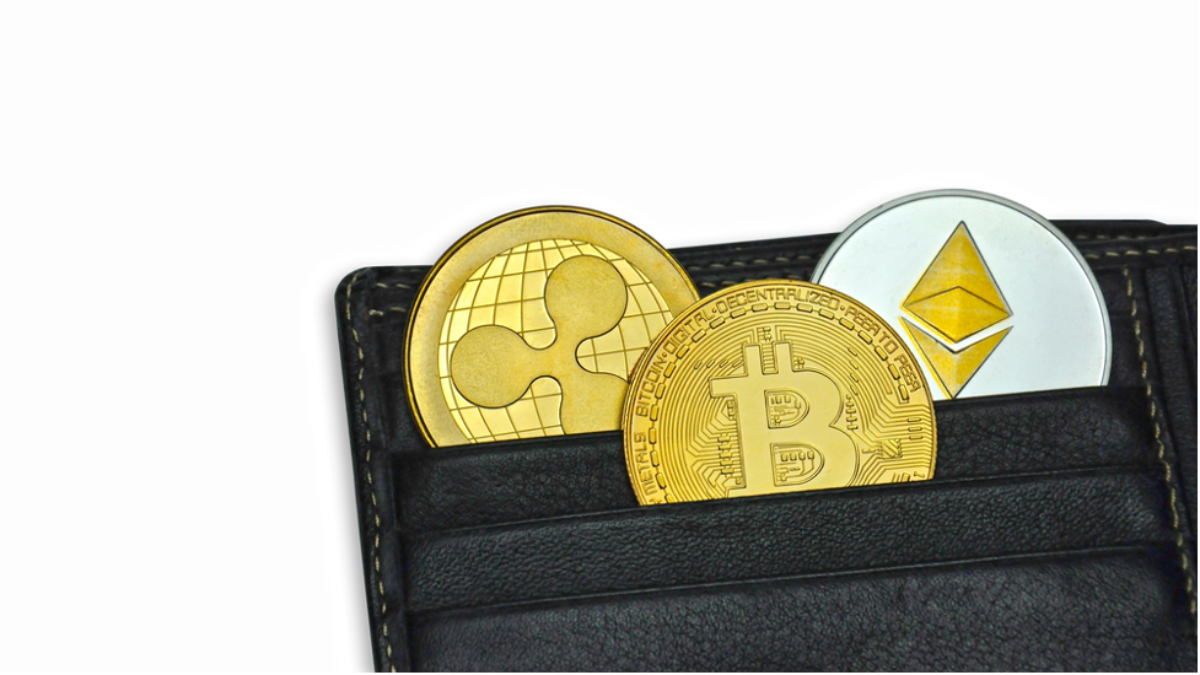
Source: tapscape.com
Your crypto wallet’s private keys are the digital equivalent of a vault’s key. Without them, you have no access to your cryptocurrency. Protecting these keys is paramount, as losing or compromising them means losing your entire investment. Understanding the importance of secure key management is critical for any cryptocurrency user.
Critical Importance of Private Keys
Private keys are cryptographic codes that grant access to your cryptocurrency holdings. They are essential for signing transactions and verifying ownership. Without them, you cannot send, receive, or manage your crypto assets. This makes them the single most crucial component of your security strategy. Think of them as the password to your digital fortune.
Different Methods for Securely Storing Private Keys
Storing private keys securely is vital. A single lapse in security can lead to catastrophic financial loss. Several methods exist, each with its own set of advantages and disadvantages.
- Hardware Wallets: Hardware wallets are physical devices designed to store private keys offline. They are considered the most secure option, as they physically isolate the keys from online threats. A dedicated hardware wallet, like a Ledger or Trezor, provides an extra layer of protection against hacking. They act as a secure vault for your private keys, ensuring that only you have access to them.
- Software Wallets (with strong security measures): Software wallets store your private keys on your computer or mobile device. While convenient, they present a security risk if not properly secured. Robust software wallets employ advanced encryption and multi-factor authentication to enhance protection. Implementing two-factor authentication (2FA) and using strong passwords adds an extra layer of defense. Be mindful of the security practices implemented by the wallet provider to ensure the security of your keys.
- Paper Wallets: Paper wallets are physical representations of your private keys, printed on paper. They are an offline storage method, offering a degree of security. However, they are vulnerable to physical theft or damage. They must be stored in a safe and secure location, away from potential threats. Storing paper wallets requires great caution and meticulous record-keeping.
Misplacing or losing a paper wallet can lead to the complete loss of your cryptocurrency.
Risks of Losing or Sharing Private Keys
Losing or sharing your private keys is a significant security risk. This can result in complete loss of access to your cryptocurrency. The consequences can be devastating. This emphasizes the importance of safeguarding your keys. Never share your private keys with anyone, regardless of their relationship with you.
Significance of Not Revealing Private Keys to Anyone
Never disclose your private keys to anyone, including family members, friends, or supposed technical support representatives. Scammers often target individuals by impersonating trusted entities. Verify the identity of anyone requesting your private keys. Protect your keys and your investment.
Steps for Protecting Private Keys Offline
Protecting your private keys offline is crucial. Storing them in a secure physical location, away from potential threats, is paramount. Avoid storing private keys in easily accessible locations, like your computer or mobile device.
- Secure Storage Location: Choose a secure, physically isolated location for your hardware or paper wallet, ensuring no unauthorized access.
- Backup Procedures: Implement robust backup procedures for your private keys, ensuring that you have multiple copies stored in separate locations. This ensures you have access even if one copy is compromised.
- Regular Reviews: Periodically review your security measures to ensure they remain effective. This includes checking your storage locations, backup copies, and overall security protocols.
Keeping Track of Transactions
Staying vigilant about your crypto transactions is crucial for identifying and preventing fraudulent activities. Regularly reviewing your transaction history allows you to catch potential problems early, minimizing potential losses. This proactive approach is essential in the volatile crypto market, where scams and errors can quickly escalate into significant financial damage.Thorough transaction monitoring goes beyond just checking balances; it involves scrutinizing every detail of each transaction, ensuring everything aligns with your intended actions.
This includes examining the sender, recipient, date, time, and amount involved in each transfer. Understanding the nuances of your transactions can help you spot inconsistencies or unusual patterns that might indicate malicious activity.
Importance of Transaction Monitoring
Regularly reviewing your transaction history is vital for safeguarding your crypto assets. It allows you to promptly identify and respond to potential fraudulent activities, which is critical for mitigating financial losses. By actively monitoring transactions, you can prevent unauthorized access and exploitation.
Identifying Fraudulent Transactions
Recognizing suspicious transactions requires a keen eye for detail and an understanding of typical transaction patterns. Look for unusual amounts, unexpected recipients, or unusual transaction times. These deviations from your typical activity can be early indicators of fraudulent activity. Furthermore, pay close attention to transactions from unfamiliar addresses or to addresses you haven’t explicitly authorized.
Examples of Fraudulent Crypto Transactions
Various forms of fraudulent crypto transactions exist. One common example is a phishing scam where attackers impersonate legitimate platforms or individuals to trick you into revealing your private keys. Another is a “rug pull,” where the creators of a cryptocurrency project disappear with investors’ funds after the initial token sale. A third example involves malicious actors using malware to steal your private keys and access your wallet.
These are just a few examples, and the tactics are constantly evolving. Be aware of new schemes and adjust your monitoring practices accordingly.
Creating a Transaction Log
Creating a transaction log provides a crucial record of your crypto activities. This detailed record can be a valuable tool for auditing your transactions and for resolving disputes. Record each transaction, including the date, time, sender address, recipient address, amount, and any other relevant details. Maintaining a well-organized transaction log can significantly simplify the process of tracking your crypto activities.
For example, if you’re involved in a dispute with an exchange, having a detailed transaction log will help in the investigation and resolution process.
Transaction History in Resolving Disputes
A comprehensive transaction history is critical for resolving disputes with exchanges or other parties. Having this record allows you to clearly document the sequence of events and transactions related to the dispute. The transparency and clarity provided by a well-maintained transaction history greatly increase your chances of a favorable outcome in any dispute. This evidence will allow for a thorough investigation and reconciliation of the disputed transaction, potentially saving you from significant financial losses.
Staying Updated on Security Best Practices
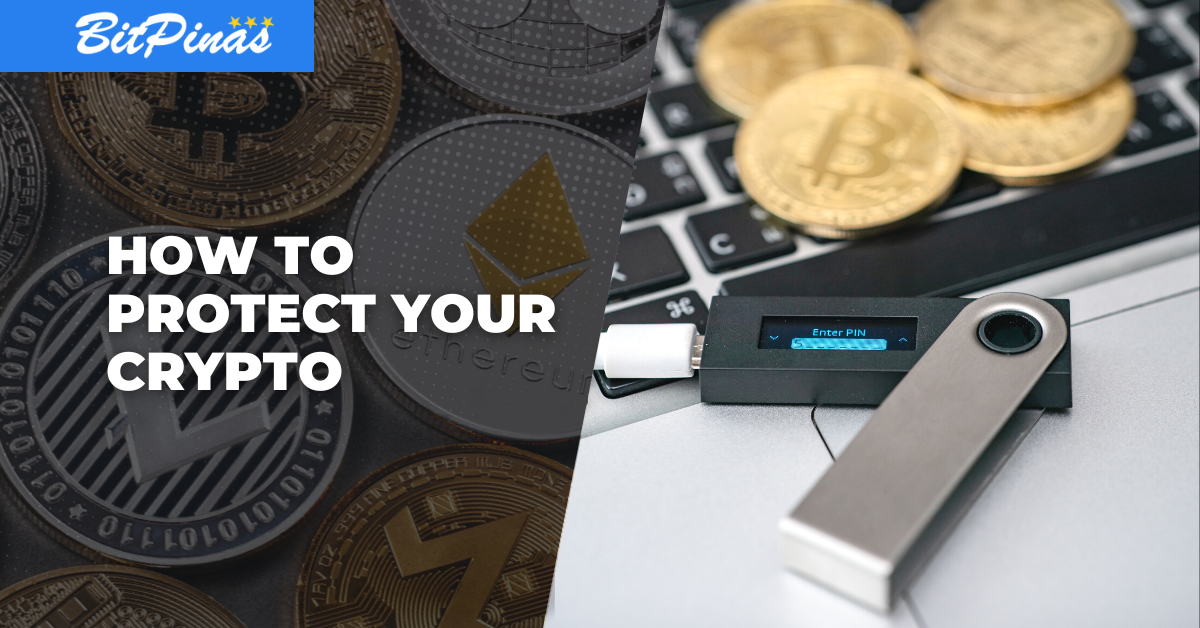
Source: bitpinas.com
Staying ahead of evolving cyber threats is crucial for maintaining the security of your crypto wallet. The digital landscape is constantly changing, with new vulnerabilities and attack vectors emerging regularly. Ignoring these updates leaves your crypto assets vulnerable to exploitation. Adapting your security measures to these new threats is a continuous process.Staying informed is not just about reacting to attacks; it’s about proactively identifying potential risks and implementing preventive measures.
This proactive approach minimizes the impact of future threats and ensures your assets remain safe. Understanding the latest trends in crypto security empowers you to make informed decisions and protect your investment.
Importance of Continuous Learning
Constant vigilance is essential in the dynamic world of crypto security. New threats emerge frequently, often exploiting previously unknown vulnerabilities. Keeping your knowledge base current allows you to identify and address these emerging dangers effectively. This constant learning process ensures your security strategies remain effective.
Resources for Staying Updated
Staying informed requires access to reliable sources. The crypto community, including forums, news outlets, and dedicated security researchers, plays a vital role in disseminating critical information. This knowledge allows you to stay up-to-date on the latest threats and best practices.
- Cryptocurrency News Outlets: Major news outlets dedicated to cryptocurrencies often report on security breaches, vulnerabilities, and best practices. Subscribing to newsletters or following reputable crypto news sources is a valuable way to stay updated. Examples include Cointelegraph, CoinDesk, and Bloomberg.
- Security Research Blogs and Papers: Security researchers publish articles and papers on the latest vulnerabilities and attack methods. Following these sources helps you understand the technical aspects of threats and implement necessary countermeasures. Look for publications from established security firms or independent researchers.
- Community Forums and Discord Servers: Crypto communities often provide a platform for sharing security updates and best practices. Active participation in these forums allows you to learn from the experiences of other users and stay aware of emerging threats. Be sure to verify the reputation and trustworthiness of the community.
- Security Audit Firms: Specialized firms conduct audits and security assessments for crypto platforms and wallets. Their findings often highlight critical vulnerabilities and best practices. These resources provide valuable insights into current security standards.
Adapting Security Measures to New Threats
As new threats emerge, your security strategies need to evolve accordingly. Regularly review your current security protocols and identify areas that may need strengthening. This proactive approach is vital to ensuring that your defenses remain robust and effective. Cryptocurrency security is an ongoing process.
The Role of Community Forums and News Outlets
Community forums and news outlets play a crucial role in disseminating important security updates. These platforms often act as early warning systems for emerging threats. They can provide valuable insights into new vulnerabilities and best practices to counter them.
Recommended Resources for Crypto Security
| Resource Type | Specific Examples |
|---|---|
| News Outlets | Cointelegraph, CoinDesk, The Block |
| Security Research Blogs | Cipher Brief, Krebs on Security, Threatpost |
| Community Forums | Reddit’s r/Bitcoin, r/CryptoCurrency, relevant Discord servers |
| Security Audit Firms | (Specific firms may vary, research for reputable firms in the crypto space) |
Last Point
In conclusion, safeguarding your crypto wallet involves a multi-faceted approach. Implementing strong passwords, utilizing secure hardware wallets, and practicing vigilance against phishing attacks are all crucial steps. Regularly updating software, protecting against malware, and understanding the significance of your private keys are fundamental components of a comprehensive security strategy. By adhering to these best practices, you can significantly reduce your vulnerability to cyber threats and confidently navigate the crypto landscape.
Detailed FAQs
What are the most common types of crypto wallets?
Common crypto wallet types include software wallets (installed on your computer), hardware wallets (physical devices), and mobile wallets (accessed via smartphones). Each type has different security pros and cons.
How often should I update my crypto wallet software?
Regularly updating your software is critical. Updates often include crucial security patches that address vulnerabilities. Check for updates frequently and install them promptly.
What are some telltale signs of a phishing email?
Phishing emails often use urgent language, contain suspicious links, request personal information, or have poor grammar or formatting. Always be cautious and verify the sender’s authenticity before clicking any links or providing any details.
What should I do if I suspect my wallet has been compromised?
Immediately stop using the wallet and change your passwords. Contact your exchange or wallet provider, and report the incident to the relevant authorities.

